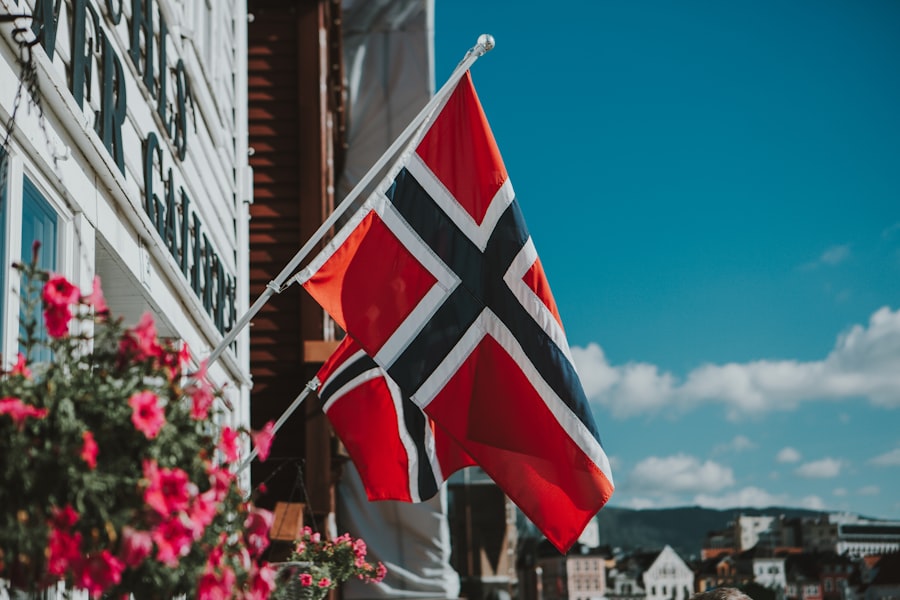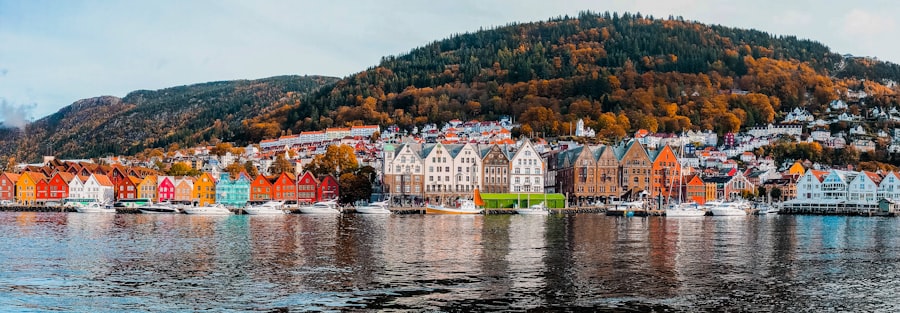Julaften, or Christmas Eve, holds a place of profound importance in Norwegian culture, serving as the pinnacle of the festive season. It is a time when families come together to celebrate the spirit of Christmas, steeped in traditions that have been passed down through generations. The evening is imbued with a sense of warmth and togetherness, as Norwegians gather to honour their heritage and create lasting memories.
The significance of Julaften extends beyond mere festivities; it encapsulates the values of family, community, and the joy of giving. In Norway, Julaften is not just a day on the calendar; it is a cultural phenomenon that resonates deeply within the hearts of its people. The anticipation builds throughout December, culminating in this special night when homes are adorned with decorations, and the air is filled with the scent of traditional foods.
It is a time for reflection, gratitude, and the reaffirmation of bonds that tie families and communities together. As Norwegians prepare for this cherished occasion, they embrace the essence of what it means to celebrate life and love. Your journey to a smooth relocation starts here. Talk one-on-one with a Norway Relocation specialist and turn your plan into a reality.
Summary
- Julaften is the most significant day in Norwegian Christmas celebrations, marked by a strong sense of tradition and community.
- Traditional customs on Julaften include decorating the Christmas tree, attending church services, and enjoying a festive meal with loved ones.
- Food and drink play a central role in Julaften celebrations, with traditional dishes like ribbe (pork ribs) and lutefisk (dried cod) being popular choices.
- Decorating the home with candles, evergreen wreaths, and other festive ornaments is a cherished tradition on Julaften.
- Gift-giving on Julaften is a thoughtful and meaningful practice, with an emphasis on showing appreciation for loved ones through carefully chosen presents.
Traditional customs and rituals observed on Julaften
The customs and rituals associated with Julaften are as diverse as the regions of Norway itself, yet they all share a common thread of reverence for tradition. One of the most cherished customs is the gathering of family members for a festive meal, often featuring dishes that have been enjoyed for generations. Many families partake in the ritual of attending church services on Christmas Eve, where they come together to sing hymns and celebrate the birth of Christ.
This spiritual aspect adds depth to the festivities, reminding everyone of the holiday’s true meaning. Another beloved tradition is the lighting of candles, which symbolises hope and warmth during the darkest days of winter. Homes are often illuminated with candles placed in windows, creating a welcoming atmosphere for both family and friends.
In some regions, children participate in a special ritual where they place their shoes by the fireplace or under the Christmas tree, hoping that Santa Claus will fill them with treats. These customs not only enhance the festive spirit but also serve to connect individuals with their cultural roots.
The role of food and drink in Julaften celebrations

Food plays a central role in Julaften celebrations, with each dish telling a story of tradition and heritage. The festive meal typically features a variety of traditional Norwegian dishes, such as ribbe (pork ribs), pinnekjøtt (dried lamb ribs), and lutefisk (dried fish). These dishes are often accompanied by an array of sides, including potatoes, sauerkraut, and rich gravies that elevate the meal to a culinary experience.
The preparation of these dishes is often a family affair, with generations coming together to cook and share recipes that have been cherished over time. In addition to the main course, desserts also hold a special place in Julaften celebrations. Risengrynsgrøt, a creamy rice porridge served with cinnamon and sugar, is a popular choice, often accompanied by a hidden almond that brings good luck to the finder.
Gløgg, a spiced mulled wine, is another staple that warms the heart and adds to the festive atmosphere. The act of sharing food and drink during Julaften not only nourishes the body but also strengthens familial bonds and fosters a sense of community.
Decorating the home for Julaften: a festive tradition
The decoration of homes for Julaften is an integral part of the holiday preparations, transforming ordinary spaces into festive havens. Norwegians take great pride in adorning their homes with traditional decorations that reflect their cultural heritage. From hand-crafted ornaments to twinkling lights, each element contributes to an atmosphere of joy and celebration.
Many families opt for natural decorations, such as pine branches and berries, which evoke the beauty of Norway’s winter landscape. One particularly cherished tradition is the creation of a Christmas tree adorned with lights, ornaments, and sometimes even edible treats like gingerbread cookies. The tree serves as a focal point for family gatherings on Julaften, symbolising unity and joy.
As families come together to decorate their trees, they share stories and laughter, reinforcing their connections to one another and to their cultural traditions. This act of decorating not only beautifies their homes but also instils a sense of anticipation for the celebrations to come.
Julaften gift-giving and the importance of thoughtful presents
Gift-giving on Julaften is a cherished tradition that embodies the spirit of generosity and thoughtfulness. As families gather around the Christmas tree, exchanging presents becomes a moment filled with excitement and joy. The act of giving is not merely about material possessions; it reflects an understanding of one another’s desires and needs.
Thoughtful gifts are often chosen with care, demonstrating love and appreciation for family members and friends. In many households, gifts are opened after the festive meal, creating an atmosphere of anticipation that builds throughout the evening. Children eagerly await this moment, their eyes sparkling with excitement as they unwrap their presents.
The joy experienced during this exchange reinforces familial bonds and creates lasting memories that will be cherished for years to come. In essence, gift-giving on Julaften serves as a reminder of the importance of kindness and connection within Norwegian culture.
The importance of family and community gatherings on Julaften

Family and community gatherings are at the heart of Julaften celebrations in Norway. This holiday serves as an opportunity for loved ones to come together, reinforcing relationships that may have been strained by distance or time. The warmth of shared experiences fosters a sense of belonging that is vital to Norwegian culture.
Families often travel long distances to be with one another during this special time, highlighting the significance placed on togetherness. In addition to family gatherings, many communities organise events that bring people together in celebration. These may include local markets or community dinners where neighbours can share in the festivities.
Such gatherings create an inclusive atmosphere where everyone can partake in the joy of Julaften, regardless of their background or circumstances. The emphasis on community during this holiday reflects Norway’s values of solidarity and support for one another.
Julaften traditions in Norwegian churches and religious observances
For many Norwegians, Julaften holds deep religious significance as they gather in churches to commemorate the birth of Christ. Church services on Christmas Eve are often filled with hymns, prayers, and candlelight vigils that create an atmosphere of reverence and reflection. These services provide an opportunity for individuals to connect with their faith while celebrating alongside their loved ones.
In some regions, churches may host special events such as children’s plays or nativity scenes that depict the story of Christ’s birth. These performances not only engage younger generations but also serve as a reminder of the holiday’s spiritual roots. The blend of tradition and faith during Julaften reinforces its importance within Norwegian culture, allowing individuals to celebrate both their heritage and their beliefs.
Julaften in modern Norway: how the holiday has evolved over time
As Norway continues to evolve in an increasingly globalised world, so too has the celebration of Julaften adapted to contemporary influences while retaining its core traditions. Modern technology has transformed how families connect during this holiday season; video calls allow loved ones who may be far apart to share in the festivities virtually. Social media platforms also play a role in spreading holiday cheer as families share photos and stories from their celebrations.
Despite these changes, many traditional customs remain steadfastly intact. Families still gather around festive meals, exchange thoughtful gifts, and participate in age-old rituals that define Julaften. This balance between modernity and tradition reflects Norway’s ability to embrace change while honouring its rich cultural heritage.
As new generations take part in these celebrations, they continue to pass down customs that ensure Julaften remains a cherished occasion for years to come.
Julaften in popular culture: how the holiday is depicted in Norwegian media
Julaften has found its way into various forms of popular culture in Norway, from literature to film and television shows. These depictions often highlight the warmth and joy associated with this festive occasion while showcasing traditional customs that resonate with audiences. Norwegian films frequently feature scenes set during Julaften, capturing the essence of family gatherings and festive meals that define this holiday.
Moreover, literature often explores themes related to Julaften—stories that delve into familial relationships or reflect on personal growth during this time of year resonate deeply with readers. Such portrayals serve not only as entertainment but also as reminders of what makes Julaften special within Norwegian culture: love, connection, and shared experiences that transcend generations.
Julaften superstitions and folklore: ancient beliefs and customs that endure
Superstitions and folklore surrounding Julaften add an intriguing layer to this festive occasion in Norway. Many Norwegians hold onto ancient beliefs that have been passed down through generations—these customs often reflect a deep connection to nature and spirituality. For instance, it is said that if one hears a cow mooing on Christmas Eve, it signifies good fortune for the coming year.
Another enduring belief involves leaving out porridge for Nisse—a mythical creature akin to Santa Claus—who is said to protect homes during winter months. By offering this treat on Julaften, families hope to ensure prosperity and goodwill throughout the year ahead. Such superstitions enrich the holiday experience by connecting individuals with their cultural roots while adding an element of magic to celebrations.
How to celebrate Julaften like a Norwegian: tips for embracing the holiday’s traditions
To truly embrace Julaften like a Norwegian, one must immerse themselves in its rich traditions while fostering connections with family and friends. Begin by preparing traditional dishes such as ribbe or pinnekjøtt—cooking these meals together can be an enjoyable bonding experience that brings loved ones closer together. Consider incorporating local ingredients or recipes passed down through generations for an authentic touch.
Decorating your home is another essential aspect; opt for natural decorations like pine branches or handmade ornaments that reflect your personal style while honouring tradition. Finally, remember that gift-giving should be thoughtful—consider what your loved ones truly desire rather than focusing solely on material value. In conclusion, celebrating Julaften like a Norwegian involves embracing both cultural heritage and personal connections—creating lasting memories filled with love, joy, and gratitude during this special time of year.
Register for a Norwegian class at the NLS Norwegian Language School now!

